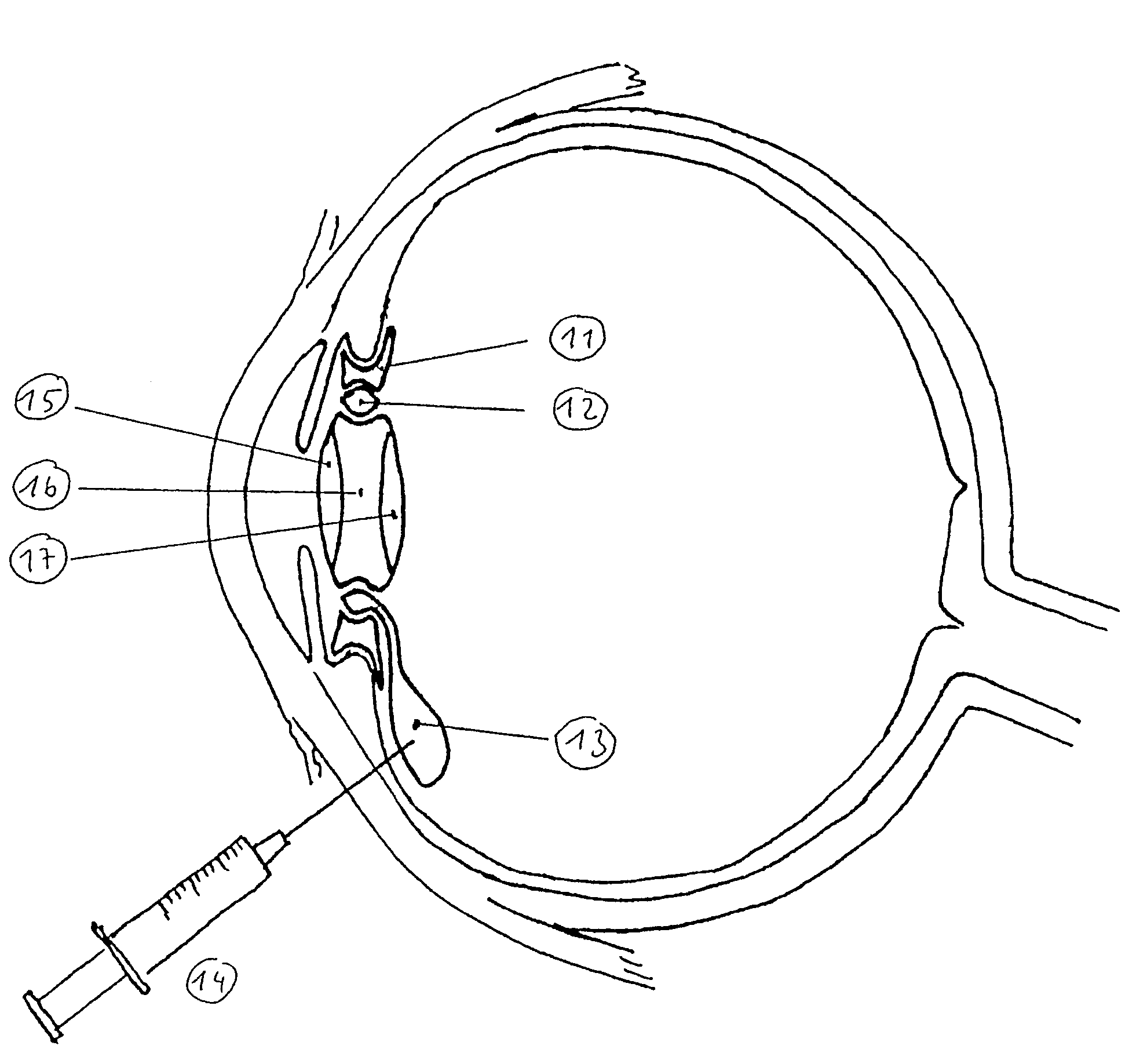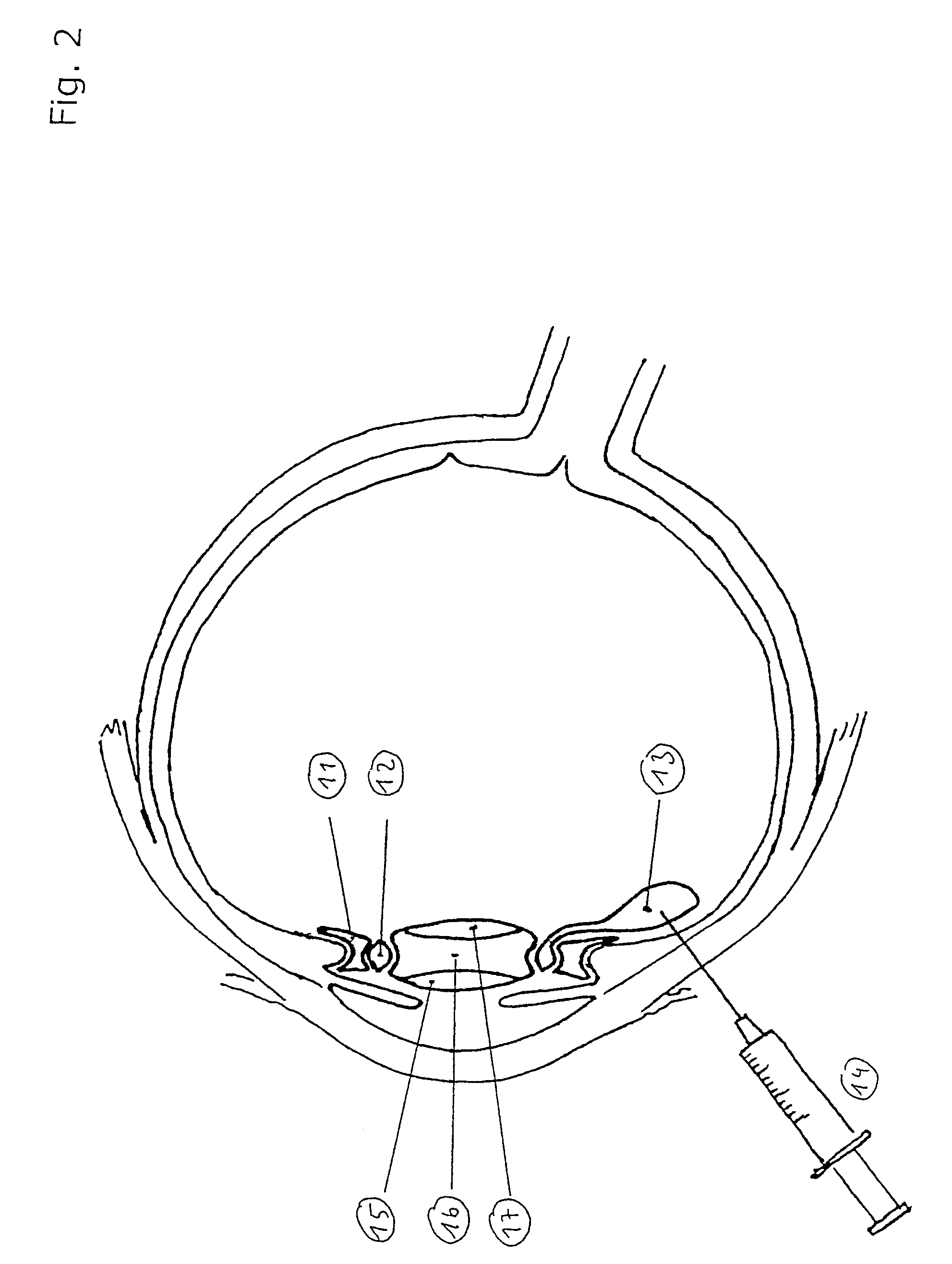Accommodative lens implant, controlled by the ciliary muscle
a technology of ciliary muscle and implant body, which is applied in the field of accommodating artificial lens implants, can solve the problems of state of the art, lack of crucial elements for conducting muscular forces, and low success rate of implantation, and achieve the effect of the base shape of the implant body itsel
- Summary
- Abstract
- Description
- Claims
- Application Information
AI Technical Summary
Benefits of technology
Problems solved by technology
Method used
Image
Examples
Embodiment Construction
[0027]The drawing in FIG. 1 shows the cornea 1 in the anterior region of the eyeball, with anterior optic chamber 2 situated behind it. Reference numeral 3 identifies the iris of the eye.
[0028]The visual axis is labelled by the reference numeral 10. The numeral 5 identifies the sulcus between the ciliary muscles and the iris, while 6 indicates the origin of the ciliary muscles and the muscles themselves. The zonule fibers are identified by the numeral 7, the lens capsule by 8, and the retina by 9.
[0029]In the drawing in FIG. 2 a place holder is discernible, namely the intermobile element 11 that fixes the position of the implant, the latter consisting of outer lens 15, fluid-filled cavity 16 and inner lens 17. Between the intermobile element 11 and the implant there is another fluid depot 12 constructed as a ring, which communicates with an external injection chamber 13 so that fluid injection can be carried out by way of, for example, a syringe 14. The lens implant shown in FIG. 2 ...
PUM
 Login to View More
Login to View More Abstract
Description
Claims
Application Information
 Login to View More
Login to View More - R&D
- Intellectual Property
- Life Sciences
- Materials
- Tech Scout
- Unparalleled Data Quality
- Higher Quality Content
- 60% Fewer Hallucinations
Browse by: Latest US Patents, China's latest patents, Technical Efficacy Thesaurus, Application Domain, Technology Topic, Popular Technical Reports.
© 2025 PatSnap. All rights reserved.Legal|Privacy policy|Modern Slavery Act Transparency Statement|Sitemap|About US| Contact US: help@patsnap.com



